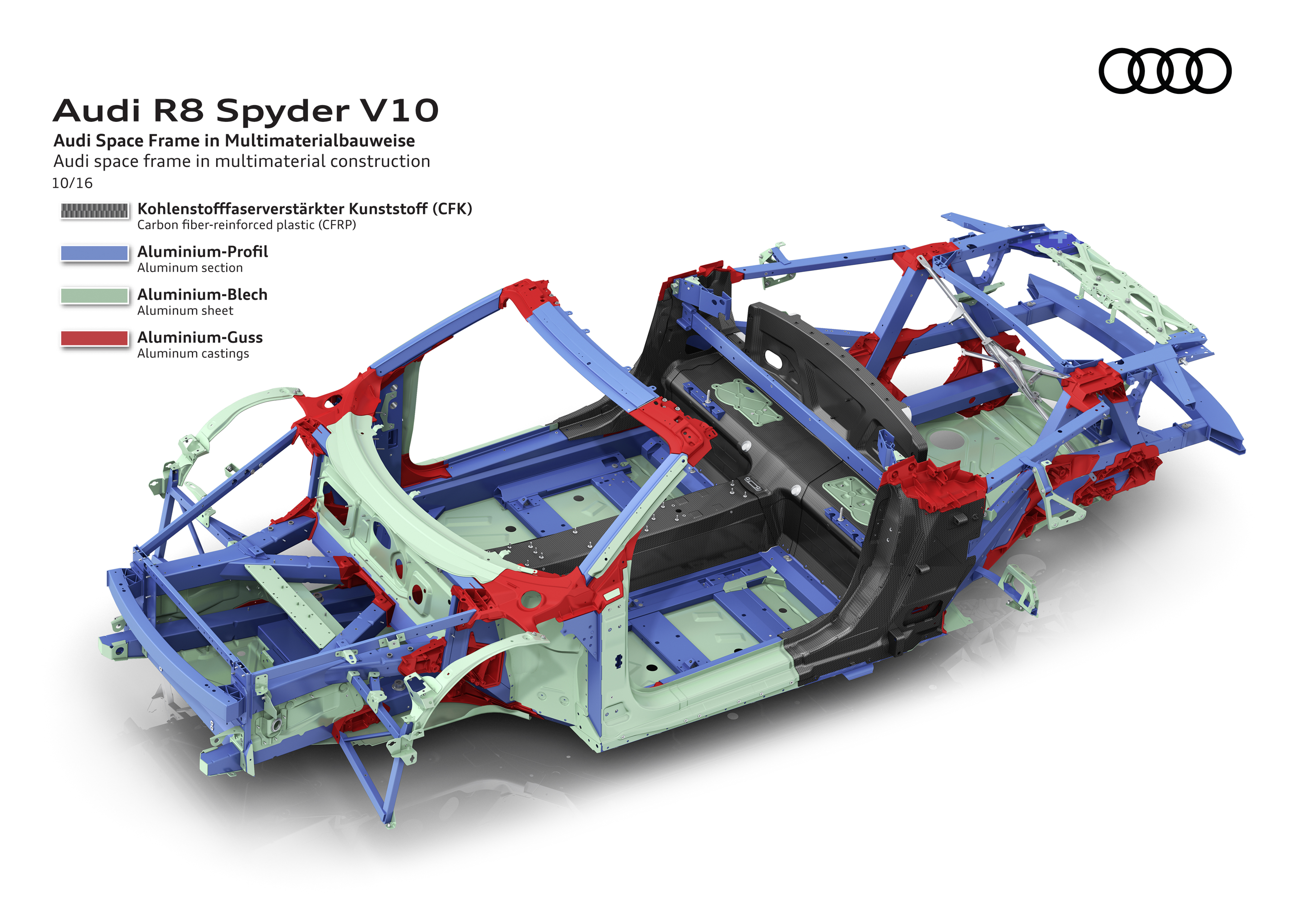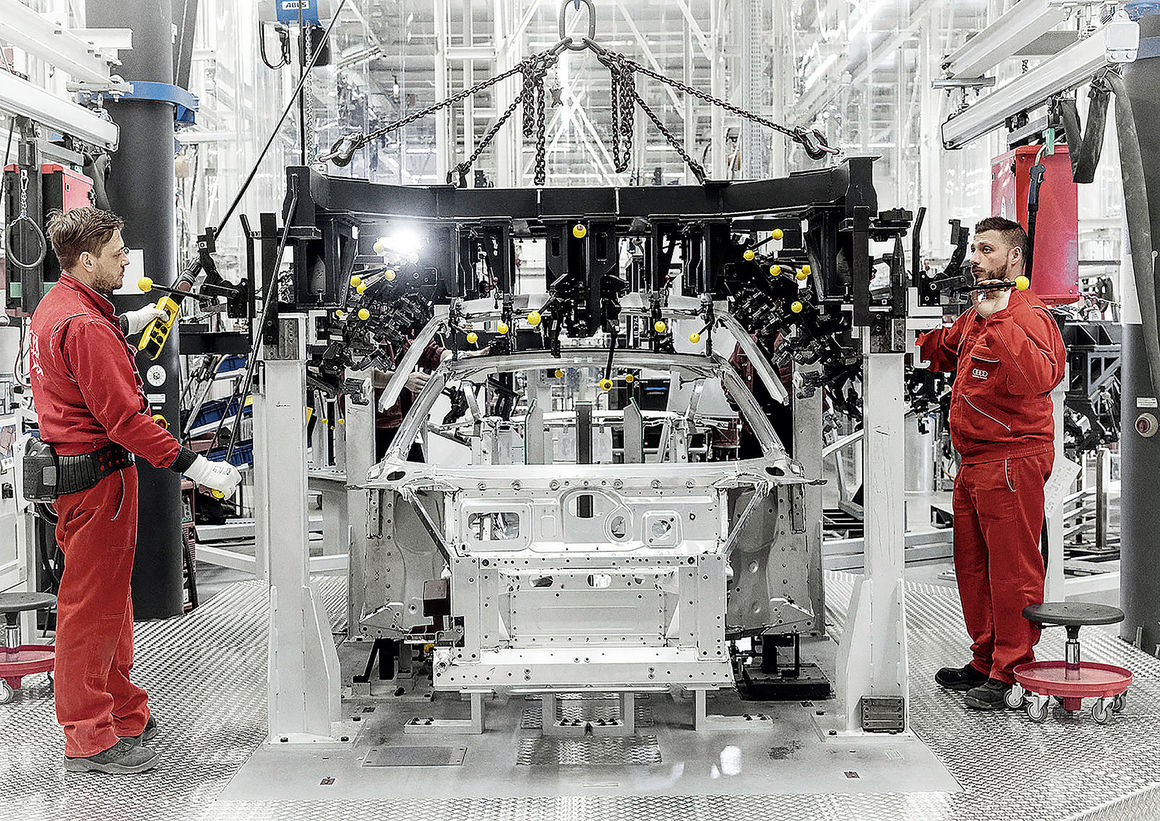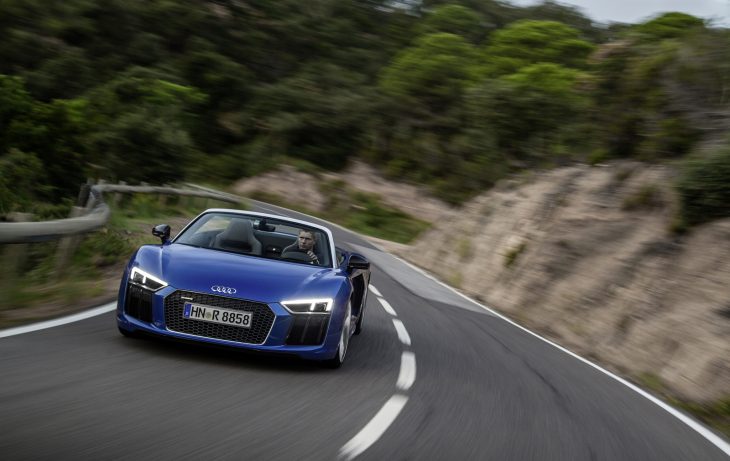The new 2017 R8 Spyder feature a mixed material construction designed to improve performance and fuel economy. Designed with close cooperation between racing engineers, motorsport specialists, and developers, the street version of the R8 has a significant boost in performance.
The R8 Spyder features a new multi-material Audi Space Frame (ASF) that combines aluminum components with components made of structurally integrated carbon fiber-reinforced polymer (CFRP). The ASF in the new Audi R8 Spyder has a total weight of just 208 kilograms (458.6 lb).
Comprising 79.6% of the ASF, the aluminum components form a lattice that Audi’s engineers have used to incorporate specific reinforcements especially into the sills, A-posts, and windshield frame. The front and rear ends of the new R8 Spyder are assembled primarily from cast aluminum nodes and extruded sections. The body’s outer skin — for example, the front hatch, doors, and side elements — is also made primarily of aluminum. The center tunnel, bulkhead, B-pillars, and cover of the convertible top compartments are made of CFRP (13%), forming a strong, nearly torsion-free backbone of the occupant cell. Innovative manufacturing methods lower the weight of individual components by up to 10%. The highly rigid body weighs just 208 kg (458.6 lbs).
Compared to the previous model, the ASF of the new Audi R8 Spyder has become significantly better in all criteria. With nearly 50% higher torsional rigidity, the frame is the foundation for the precise handling, high crash safety, and acoustically pleasing vibration behavior. The new multi-material ASF attains a top figure in the sports car segment for its lightweight index – a measure of the relationship between weight, size, and rigidity.

Manufacturing the R8 Spyder ASF
The new 2017 R8 Spyder is being manufactured by quattro GmbH in a purpose-built production facility, the “Audi Böllinger Höfe” in Heilbronn, close to Audi’s traditional Neckarsulm, Germany, site. In the body shop, the initial focus is on the aluminum parts of the ASF. In a first step, specialists separately weld together the front body module, middle floor, and rear body module – which are made of aluminum castings and extruded aluminum profiles – and then join the three modules to produce the underbody.
Only cold techniques are used to join aluminum to the CFRP. The ASF includes 215 semi-hollow punch rivets, 184 blind rivets, 244 metric, and 286 self-tapping screws. An engineered adhesive (total length of the seams is 51 m, or 167.3 ft) and a special seal ensure that the metal alloy does not corrode in the contact areas with the CFRP. The weld seams between the aluminum components have a total length of 84 m (275.6 ft).
In Superstructure and Finish, the body gets its side structure and add-on parts, such as doors and the front hatch. Finally, it is painted in the color requested by the customer. The convertible top module – a closed unit – is bolted to the ASF at three points. The finished body is transferred on a self-propelled assembly skid known as a driverless transport system (DTS) to the assembly shop.
Initial deliveries of the new Audi R8 Spyder began in November 2016.


